
HLTAID012 – Provide first aid in an education and care setting ( Includes CPR- HLTAID009)
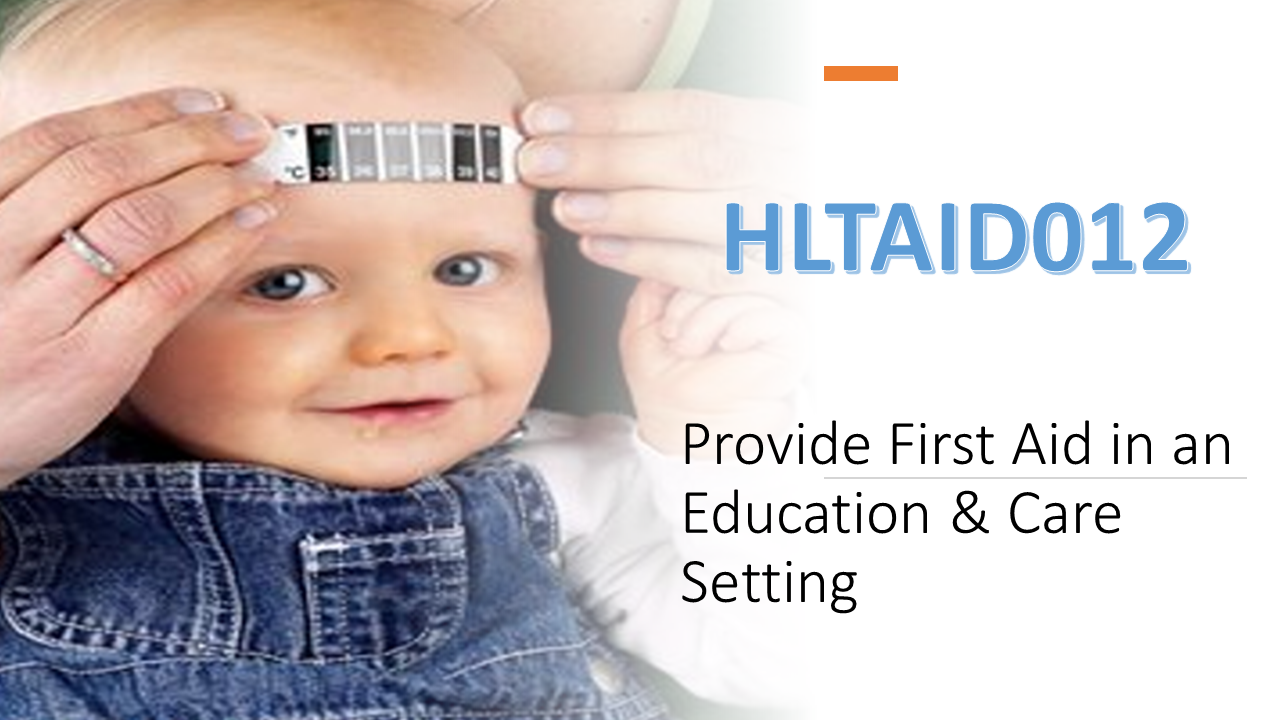
Overview
Course Description
The course duration period shown is the allowable timeframe for completion of the Online Theory. It not relevant to the nominal hours of the course or the unit certification period. This unit describes the skills and knowledge required to provide a first aid response to infants, children and adults in line with first aid guidelines determined by the Australian Resuscitation Council (ARC) and other Australian national peak clinical bodies. This unit applies to a range of workers within an education and care setting who are required to respond to a first aid emergency, including asthma and anaphylactic emergencies. This includes early childhood workers and educators who work with school age children in outside school hours care and vacation programs. This unit of competency may contribute towards approved first aid, asthma and anaphylaxis training under the Education and Care Services National Law, and the Education and Care Services National Regulations (2011). The Foundation Skills describe those required skills (language, literacy, numeracy and employment skills) that are essential to performance. Foundation skills essential to performance are explicit in the performance criteria of this unit of competency. Supersedes and not equivalent to HLTAID004 Provide an emergency first aid response in an education and care setting.
What you'll learn
Please watch all Modules / Parts of our videos individually, prior to attempting the Test Questions. If the ANSWER AREAS ARE BOXES - This Means to Choose more than 1 option. If the ANSWER AREAS ARE CIRCLES - You can only choose 1 option This is the 'Theory Only Component' and the 'Practical Assessment' must be completed prior to receiving a Statement of Attainment for this unit. ELEMENTS 1. Respond to an emergency situation. 1.1. Recognise and assess an emergency situation. 1.2. Ensure safety for self, bystanders and casualty. 1.3. Assess the casualty and recognise the need for first aid response. 1.4. Seek assistance from emergency services. 2. Apply appropriate first aid procedures. 2.1. Perform cardiopulmonary resuscitation (CPR) in accordance with the ARC guidelines. 2.2. Provide first aid in accordance with established first aid principles. 2.3. Ensure casualty feels safe, secure and supported. 2.4. Obtain consent from casualty where possible. 2.5. Use available resources and equipment to make the casualty as comfortable as possible. 2.6. Operate first aid equipment according to manufacturers’ instructions. 2.7. Monitor the casualty’s condition and respond in accordance with first aid principles. 3. Communicate details of the incident. 3.1. Accurately convey incident details to emergency services. 3.2. Report details of incident in line with appropriate workplace or site procedures. 3.3. Complete applicable workplace or site documentation, including incident report form. 3.4. Report details of incidents involving infants and children to parents or caregivers. 3.5. Follow appropriate workplace or site procedures to report serious incidents to the regulatory authority. 3.6. Maintain privacy and confidentiality of records and information in line with statutory or organisational policies. 4. Review the incident. 4.1. Recognise the possible psychological impacts on self and other rescuers and seek help when required. 4.2. Contribute to a review of the first aid response as required. Performance Evidence Evidence of the ability to complete tasks outlined in elements and performance criteria of this unit in the context of the job role. There must be evidence that the candidate has completed the following tasks in line with State/Territory regulations, first aid codes of practice, first aid guidelines determined by the Australian Resuscitation Council (ARC) and other Australian national peak clinical bodies and workplace or site procedures: managed, in line with ARC guidelines, the unconscious, breathing casualty including appropriate positioning to reduce the risk of airway compromise managed, in line with ARC guidelines, the unconscious, non-breathing adult, including: performing at least 2 minutes of uninterrupted single rescuer cardiopulmonary resuscitation (CPR) (5 cycles of both compressions and ventilations) on an adult resuscitation manikin placed on the floor following the prompts of an automated external defibrillator (AED) to deliver at least one shock demonstrating a rotation of single rescuer operators with minimal interruptions to compressions responding appropriately in the event of regurgitation or vomiting managed, in line with ARC guidelines, the unconscious, non-breathing child, including: performing at least 2 minutes of uninterrupted single rescuer cardiopulmonary resuscitation (CPR) (5 cycles of both compressions and ventilations) on a child resuscitation manikin placed on the floor managed, in line with ARC guidelines, the unconscious, non-breathing infant, including: performing at least 2 minutes of uninterrupted single rescuer CPR (5 cycles both compressions and ventilations) on an infant resuscitation manikin placed on a firm surface managed casualties, with the following: anaphylaxis asthma non-life-threatening bleeding choking envenomation, using pressure immobilisation fractures, dislocations, sprains and strains, using appropriate immobilisation techniques minor wound cleaning and dressing nosebleed shock responded to at least one simulated first aid incident contextualised to the candidate’s workplace or site, where the candidate has no knowledge of the casualty’s condition prior to starting treatment, including: identifying the casualty’s illness or injury through history, signs and symptoms using Personal Protective Equipment (PPE) as required providing appropriate first aid treatment conveying incident details to emergency services or advising casualty on any required post incident action providing an accurate verbal and written report of the incident reviewing the incident. Knowledge Evidence Demonstrated knowledge required to complete the tasks outlined in elements and performance criteria of this unit: guidelines and procedures including: ARC guidelines relevant to the provision of first aid to infants, children and adults first aid guidelines from Australian national peak clinical bodies potential incident hazards and risk minimisation processes when providing first aid infection control procedures, including use of standard precautions and resuscitation barrier devices requirements for currency of skill and knowledge first aid codes of practice appropriate workplace or site procedures relevant to the provision of first aid contents of first aid kits legal, workplace and community considerations, including: first aid requirements for services under the Education and Care Services National Law State or Territory regulations covering first aid in an Education and Care setting duty of care requirements own skills and limitations consent, including situations in which parental or caregiver consent is required privacy and confidentiality requirements awareness of potential need for stress management techniques and available support for rescuers and children considerations when providing CPR, including: upper airway and effect of positional change appropriate duration and cessation of CPR appropriate use of an AED, including specific considerations when using an AED on children safety and maintenance procedures for an AED chain of survival how to access emergency services techniques for providing CPR to adults, children and infants including: how to recognise that a casualty is unconscious and not breathing normally rate, ratio and depth of compressions and ventilations correct hand positioning for compressions basic anatomy, physiology and the differences between adults, children and infants relating to CPR signs, symptoms and management of the following in children: allergic reaction anaphylaxis asthma non-life-threatening and life-threatening bleeding breathing difficulties burns choking diabetes dehydration drowning envenomation - all current treatments eye injuries febrile convulsions fever fractures, dislocations, sprains and strains head, neck and spinal injuries hypothermia hyperthermia minor wounds pain shock nose-bleed poisoning seizures vomiting and diarrhoea identification and management of a sick infant or child including: general signs and symptoms of acute illness in children and infants referral and advice services including recognition of signs or symptoms requiring immediate ambulance response emergency action plans for known medical conditions including Asthma and Anaphylaxis age appropriate communication and distraction techniques first aider response to basic physiological differences in children. Assessment Conditions Each candidate to demonstrate skills in an environment that provides realistic in-depth, scenarios and simulations to assess candidates’ skills and knowledge. Due to the nature of this type of training, it is acceptable for the performance evidence to be collected in a simulated environment. Compression and ventilation skills must be demonstrated on resuscitation manikins, following ARC guidelines for the purpose of assessment of CPR procedures. Assessment must ensure access to: emergency action plans adult, child and infant resuscitation manikins following ARC guidelines for the purpose of assessment of CPR procedures adrenaline auto-injector training device AED training devices workplace first aid kit placebo bronchodilator and a spacer device different types of wound dressings and bandages blankets and items to treat for shock personal protective equipment (PPE) workplace injury, trauma and/or illness record, or other applicable workplace or site incident report form. Simulated assessment environments must simulate real-life situations where these skills and knowledge would be performed, with all the relevant equipment and resources of that workplace/community environment.
Content
- All Units - Module 1 (WELCOME- Student Rights & Responsibilities)
- All Units - Module 2 (Introduction to First Aid Response) PART 1
- HLTAID009 - (CPR) Module Part 1
- All Units - Module 2 (Introduction to First Aid Response) PART 2
- All Units - Module 2 (Introduction to First Aid Response) PART 3
- HLTAID009 - (CPR) Module Part 2
- HLTAID009 - (CPR) Module Part 3
- HLTAID009 - (CPR) Module Part 4
- HLTAID011 - Module 5 (Medical Conditions) PART 1
- HLTAID011 - Module 5 (Medical Conditions) PART 2
- HLTAID011 - Module 5 (Medical Conditions) PART 3
- HLTAID011 - Module 4 (Breathing Bites and Stings) PART 1
- HLTAID011 - Module 4 (Breathing Bites and Stings) PART 2
- HLTAID011 - Module 4 (Breathing Bites and Stings) PART 3
- HLTAID011 - Module 4 (Breathing Bites and Stings) PART 4
- HLTAID011 - Module 4 (Breathing Bites and Stings) PART 5
- HLTAID011 - Module 3 (Initial Response) PART 1
- HLTAID011 - Module 3 (Initial Response) PART 2
- HLTAID011 - Module 3 (Initial Response) PART 3
- HLTAID012 Module 7 - (CHILD CARE) Module - Part 1 - add onto HLTAID011
- HLTAID011 - Module 6 (Injury & Trauma) Part 1
- HLTAID011 - Module 6 (Injury & Trauma) Part 2
- HLTAID011 - Module 6 (Injury & Trauma) Part 3
- HLTAID011 - Module 6 (Injury & Trauma) Part 4
- HLTAID011 - Module 6 (Injury & Trauma) Part 5
- HLTAID011 - Module 6 (Injury & Trauma) Part 6
- HLTAID012 Module 7 - (CHILD CARE) Module - Part 2 - add onto HLTAID011
- HLTAID012 Module 7 - (CHILD CARE) Module - Part 3 - add onto HLTAID011
- HLTAID012 Module 7 - (CHILD CARE) Module - Part 4 - add onto HLTAID011
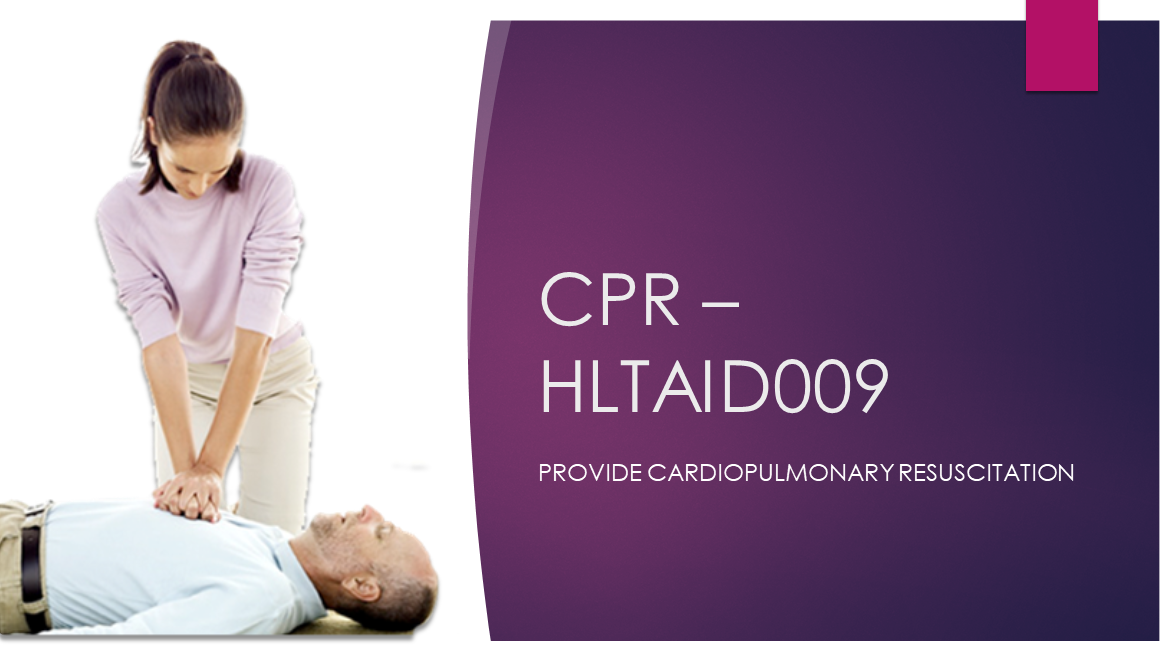
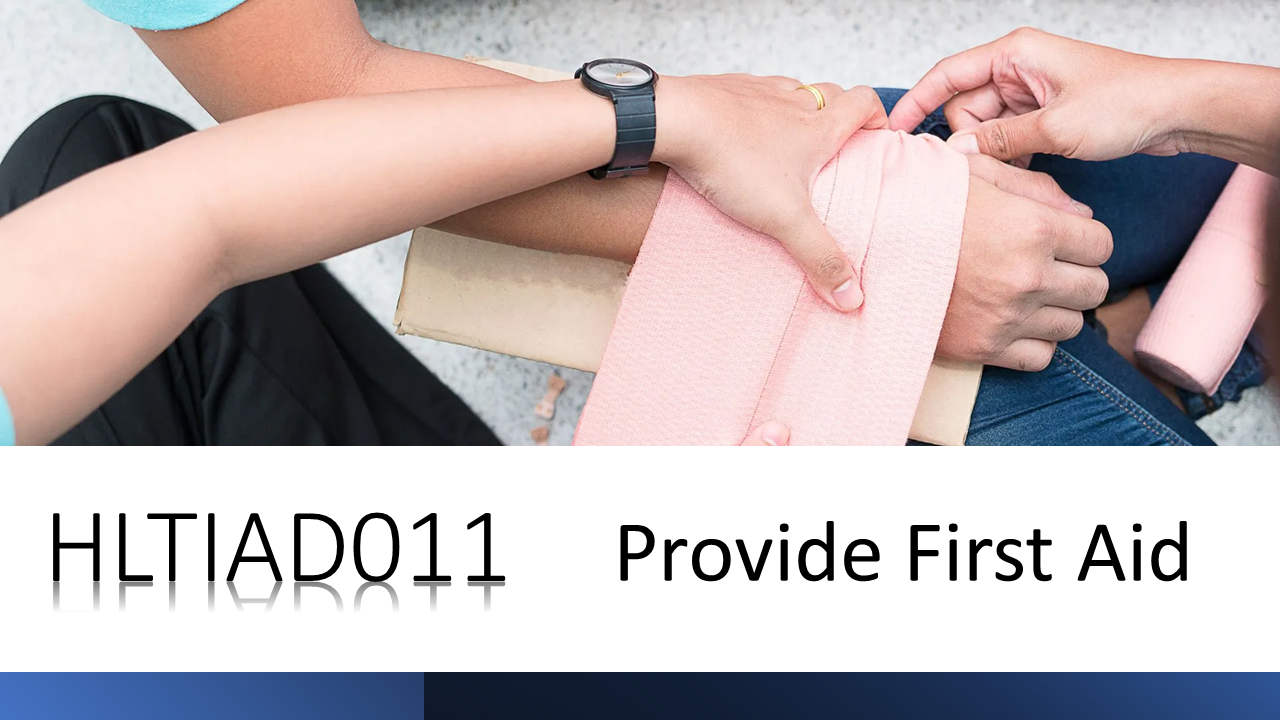
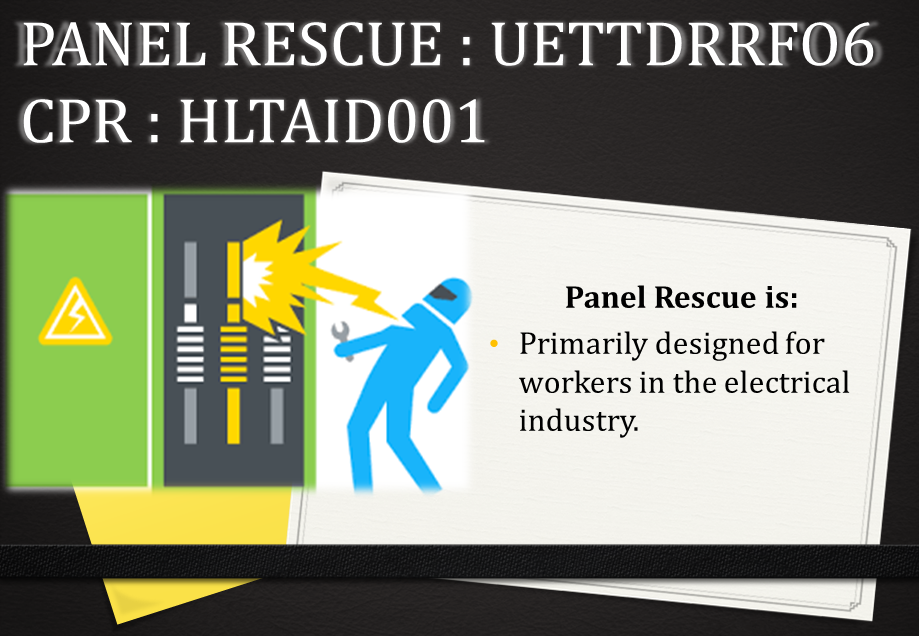
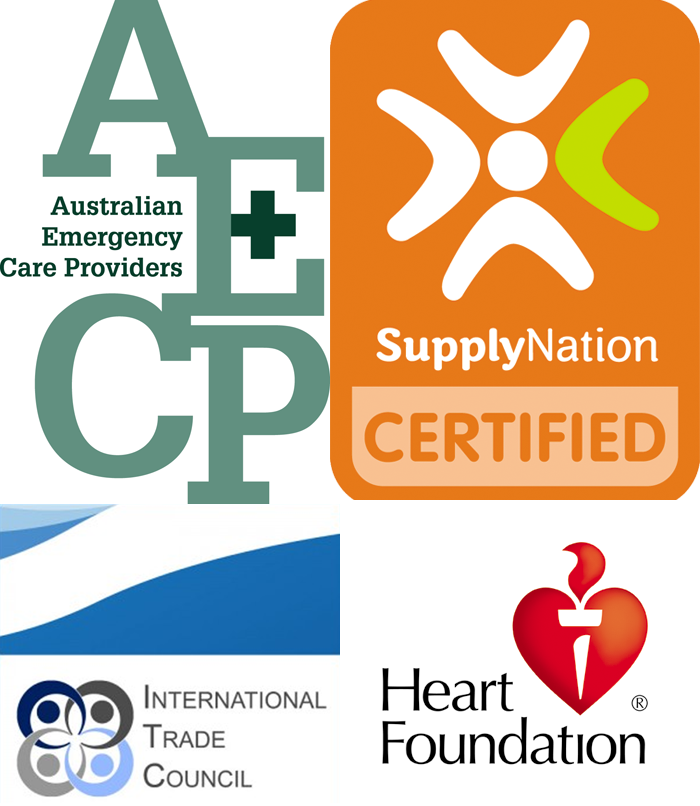 TOGETHER WE CAN MAKE A WORLD OF DIFFERENCE.
TOGETHER WE CAN MAKE A WORLD OF DIFFERENCE.